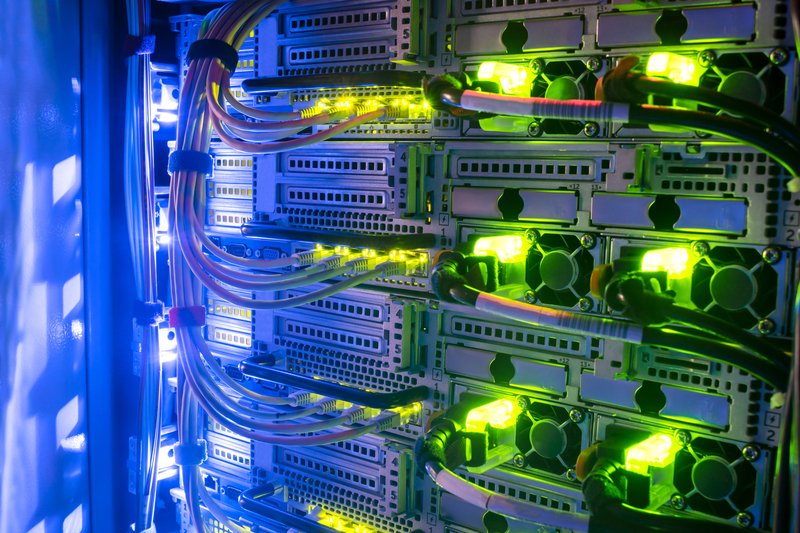
Telephone systems and computer networks are usually connected via a type of cable called Unshielded Twisted Pair (UTP). Over the years, a variety of standards (or Categories) for UTP cabling have been established. The most common in recent years are Cat3, Cat5, and Cat6. There have been several variations on these, including Cat5e and Cat6A. Each level of cabling promises to provide higher rates of data transmission, but also higher costs.
These costs are not just for the cabling, but for the wall jacks, patch panels, and patch cables that complete a cable plant. Just as a chain is only as strong as the weakest link, a cable plant must certify all components at a given level in order to be assured compatible with a given speed requirement.
Considerations for Network Cabling Types
There are several important considerations that may impact your selection of the appropriate category of cable for a new cable plant.
First, the speed of a given category represents the maximum network speed that should be transmitted. Using a higher category of cable does not, by itself, provide better performance–you must have network hardware that will take advantage of that cable, including network switches and computer interfaces.
Second, the speed of the cable plant and the network is limited by the resource that is being accessed. A faster local network can mean that retrieving files from a local server, or accessing a database that is local, is
quicker. But when accessing Internet resources, such as cloud-based applications, the bottleneck is often the Internet connection. In other words, upgrading the local network (and therefore cable plant) from 1Gbps to 10Gbps won’t help much when accessing Internet resources via an Internet connection that is 100Mbps.
Finally, consider that a fast network and cable plant don’t necessarily mean a fast application experience. The speed of the workstation, the server, the storage, and the design of the application can all contribute to bottlenecks that make the network performance irrelevant. Before investing in a faster
cable plant (or network) it is a good idea to consult with an IT professional with a solid understanding of all layers of the IT infrastructure as well as performance analysis.
Common UTP cabling categories
The following categories of UTP cabling are the most commonly used in recent years:
Cat3–supports data speeds up to 10Mbps (10 Megabits per second). This was the original Ethernet speed and was widespread in the early 1990s. Cat3 also has been common as the typical cabling for analog and digital phone systems. VOIP (Voice Over IP) phones, on the other hand, treat phone traffic as data, so these days usually require Cat5 and up.
Cat5–supports data speed up to 100Mbps. Most cabling installed over the last decade has been Cat5. In recent years, Cat5 cabling has been upgraded to Cat5e. This specification provided better and more reliable throughput. But it is still not guaranteed to provide better than 100Mpbs throughput.
Cat5e 350MHz–In recent years, Cat5e cabling has been developed that is certified for much faster bandwidth. It is rated at 350MHz, vs. the original specification for Cat5 cabling, which was 100MHz. This cabling can provide a certified Gigabit (1000Mbps) connection.
Cat6–Supports Gigabit (1000Mbps) throughput. Can also support faster speeds over limited distances.
Cat6A—supports 10 Gigabit throughput.
It is important to understand that the speed ratings of each type of cable require that the given speed can be reliably achieved over a 100-meter distance. This is the well-established distance limitation for twisted-pair Ethernet networks. At this distance, Cat5e 350MHz and Cat6 cabling deliver the same practical result—Gigabit connectivity. Cat6 cable can carry a 10 Gigabit signal over shorter distances, but design standards dictate that networks should be built based on the 100-meter specification.
https://infassure.com/wp-content/uploads/2020/10/Selecting-category-of-data-cabling.pdf
